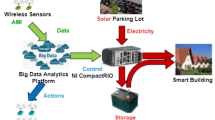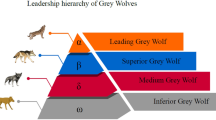Abstract
This study explores the application of bio-inspired algorithms (BIAs) in training artificial neural networks (ANNs) in the area of the nonlinear chemical process modeling. Motivated by the increasing complexity and operational efficiency of chemical processes, the need for schemes that can improve model identification of highly nonlinear systems is demanded. As a case study, the Tennessee Eastman (TE) chemical reactor problem is considered. The key issue is to find a particular architecture for an ANN that best model the TE chemical process. We propose the use of BIAs of bat algorithm (BA), firefly algorithm (FA), and artificial bee colony (ABC) algorithm as mechanisms to automatically update the synaptic weights of ANN. These algorithms were conducted to increase the ability of ANN to adapt the dynamic aspect of the TE process and prevent trapping into a local optimum. The proposed modeling framework was devised with extensive experiments and statistical analysis to illustrate the usability and suitability of the entire modeling and identification procedures. The results were explored with a discussion using the mean square error (MSE) and the variance account for (VAF) criteria to assess the degree of identification performance of the TE case study model. The reliability of the presented models was compared with previously developed models for the same subsystems of the TE reactor using competitive, intelligent approaches. The comparative results show that the proposed approach provides superior modeling performance and outperforms its competitors.
Similar content being viewed by others
References
Tennessee eastman challenge archive. depts.washington.edu/control/LARRY/TE/download.html. Accessed 17 Jan 2018
Al-Hiary H, Braik M, Sheta A, Ayesh A (2008) Identification of a chemical process reactor using soft computing techniques. In: IEEE International conference on fuzzy systems, 2008. FUZZ-IEEE 2008. (IEEE World Congress on Computational Intelligence). IEEE, pp 845–853
Al-Hiary H, Sheta A (2006) Identification and model predictive controller design of the Tennessee Eastman chemical process using ANN. In: Proceeding of 4th international multi-conference on computer science and information technology (CSIT 2006), Amman, Jordan, April 5-7, vol 2, pp 189–198
Bathelt A, Ricker N, Jelali M (2015) Revision of the Tennessee Eastman process model. IFAC-PapersOnLine 48(8):309–314
Braik M, Sheta A, Arieqat A (2008) A comparison between GAs and PSO in training ANN to model the TE chemical process reactor. In: Proceedings of the AISB 2008 convention in communication, interaction and social intelligence, vol 1, p 24
Chen H, Tiňo P, Yao X (2014) Cognitive fault diagnosis in Tennessee Eastman process using learning in the model space. Comput Chem Eng 67:33–42
Chen TB, Dong YL, Jiao YC, Zhang FS (2006) Synthesis of circular antenna array using crossed particle swarm optimization algorithm. J Electromagn Waves Appl 20(13):1785–1795
Dong J, Zhang K, Huang Y, Li G, Peng K (2015) Adaptive total pls based quality-relevant process monitoring with application to the Tennessee Eastman process. Neurocomputing 154:77–85
Downs JJ, Vogel EF (1993) A plant-wide industrial process control problem. Comput Chem Eng 17 (3):245–255
Eldem V, Yildizbayrak N (1988) Parameter and structure identification of linear multivariable systems. Automatica 24(3):365–373
Faris H, Sheta A (2013) Identification of the Tennessee Eastman chemical process reactor using genetic programming. Int J Adv Sci Technol 50:121–140
Ge Z (2017) Review on data-driven modeling and monitoring for plant-wide industrial processes. Chemometrics and Intelligent Laboratory Systems
Haykin S (1994) Neural networks: a comprehensive foundation. Prentice Hall PTR
Jia Q, Zhang Y (2016) Quality-related fault detection approach based on dynamic kernel partial least squares. Chem Eng Res Des 106:242–252
Jockenhövel T, Biegler LT, Wächter A (2003) Dynamic optimization of the Tennessee Eastman process using the OptControlCentre. Comput Chem Eng 27(11):1513–1531
Karaboga D (2010) Artificial bee colony algorithm. Scholarpedia 5(3):6915
Karaboga D, Basturk B (2007) A powerful and efficient algorithm for numerical function optimization: artificial bee colony (abc) algorithm. J Global Optim 39(3):459–471
Li W, Hongbo S (2014) Improved kernel pls-based fault detection approach for nonlinear chemical processes. Chin J Chem Eng 22(6):657–663
Liu D, Michalski KA (2016) Comparative study of bio-inspired optimization algorithms and their application to dielectric function fitting. J Electromagn Waves Appl 30(14):1885–1894
Ljung L (1987) Theory for the user. Prentice Hall
Mish MJR (2009) Swarm intelligence techniques and its applications in water resources management ISH. J Hydraul Eng 15(1):151–169
Reddy MJ, Kumar DN (2007) An efficient multi-objective optimization algorithm based on swarm intelligence for engineering design. Eng Optim 39(1):49–68
Ricker N (1995) Optimal steady-state operation of the Tennessee Eastman challenge process. Comput Chem Eng 19(9):949–959
Ricker N, Lee J (1995) Nonlinear modeling and state estimation for the Tennessee Eastman challenge process. Comput Chem Eng 19(9):983–1005
Ricker N, Lee J (1995) Nonlinear model predictive control of the Tennessee Eastman challenge process. Comput Chem Eng 19(9):961–981
Rumelhart DE, Hinton GE, Williams RJ (1985) Learning internal representations by error propagation. Tech. rep., California Univ San Diego La Jolla Inst for Cognitive Science
Schalkoff RJ (1997) Artificial neural networks, vol 1. McGraw-Hill, New York
Sheta A (2005) Modeling the Tennessee Eastman chemical reactor using fuzzy logic. ISE Book Series on Fuzzy System Engineering-Theory and Practice published by Nova Science
Sheta AF, Braik M, Al-Hiary H (2009) Identification and model predictive controller design of the Tennessee Eastman Chemical Process using ANN. In: Proceedings of the international conference on artificial intelligence (ICAI’09), July 13-16, USA, vol 1, pp 25–31
Sheta AF, Braik M, Öznergiz E, Ayesh A, Masud M (2013) Design and automation for manufacturing processes: an intelligent business modeling using adaptive neuro-fuzzy inference systems. In: Business intelligence and performance management. Springer, pp 191–208
Wang G, Tang W, Xia J, Chu J, Noorman H, Gulik WM (2015) Integration of microbial kinetics and fluid dynamics toward model-driven scale-up of industrial bioprocesses. Eng Life Sci 15(1):20–29
Webb B (2002) Swarm intelligence: from natural to artificial systems. Connect Sci 14(2):163–164
Wei Y, Qiu J, Lam HK, Wu L (2017) Approaches to t–s fuzzy-affine-model-based reliable output feedback control for nonlinear ito stochastic systems. IEEE Trans Fuzzy Syst 25(3):569– 583
Yang XS (2009) Firefly algorithms for multimodal optimization. In: International symposium on stochastic algorithms. Springer, pp 169–178
Yang XS (2010) Firefly algorithm, stochastic test functions and design optimisation. Int J Bio-Inspired Comput 2(2):78–84
Yang XS (2010) A new metaheuristic bat-inspired algorithm. Nature inspired cooperative strategies for optimization (NICSO 2010), pp 65–74
Yin S, Wang G, Gao H (2016) Data-driven process monitoring based on modified orthogonal projections to latent structures. IEEE Trans Control Syst Technol 24(4):1480–1487
Zweiri YH, Seneviratne LD, Althoefer K (2005) Stability analysis of a three-term backpropagation algorithm. Neural Netw 18(10):1341–1347
Author information
Authors and Affiliations
Corresponding author
Ethics declarations
Conflict of interest
The authors declare they have no conflict of interest.
Additional information
Publisher’s note
Springer Nature remains neutral with regard to jurisdictional claims in published maps and institutional affiliations.
Rights and permissions
About this article
Cite this article
Sheta, A., Braik, M. & Al-Hiary, H. Modeling the Tennessee Eastman chemical process reactor using bio-inspired feedforward neural network (BI-FF-NN). Int J Adv Manuf Technol 103, 1359–1380 (2019). https://doi.org/10.1007/s00170-019-03621-5
Received:
Accepted:
Published:
Issue Date:
DOI: https://doi.org/10.1007/s00170-019-03621-5




